
August 2019
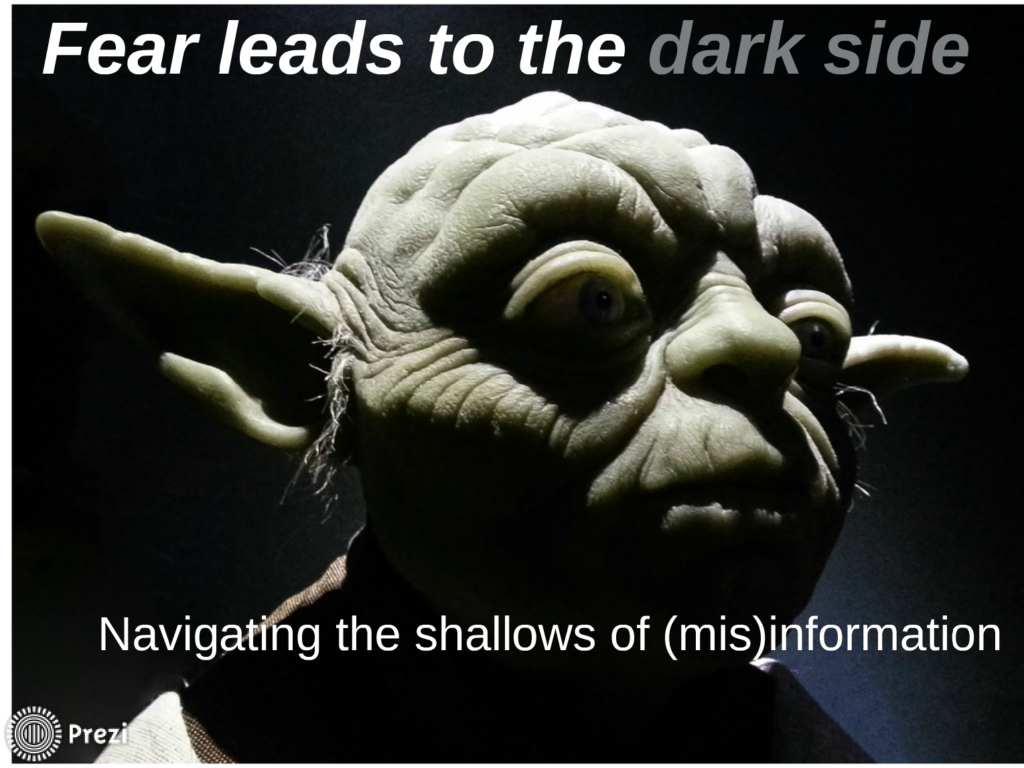
Two short disclaimers:
1) My native tongue is German, so if my English sounds foreign, that’s because it’s only my second language.
2) If you tend to suffer from motion sickness, you might want to close your eyes for parts of my presentation.
Back in the 7th century BC, the prophet Jeremiah bemoaned that the written documents of his day were not trustworthy:
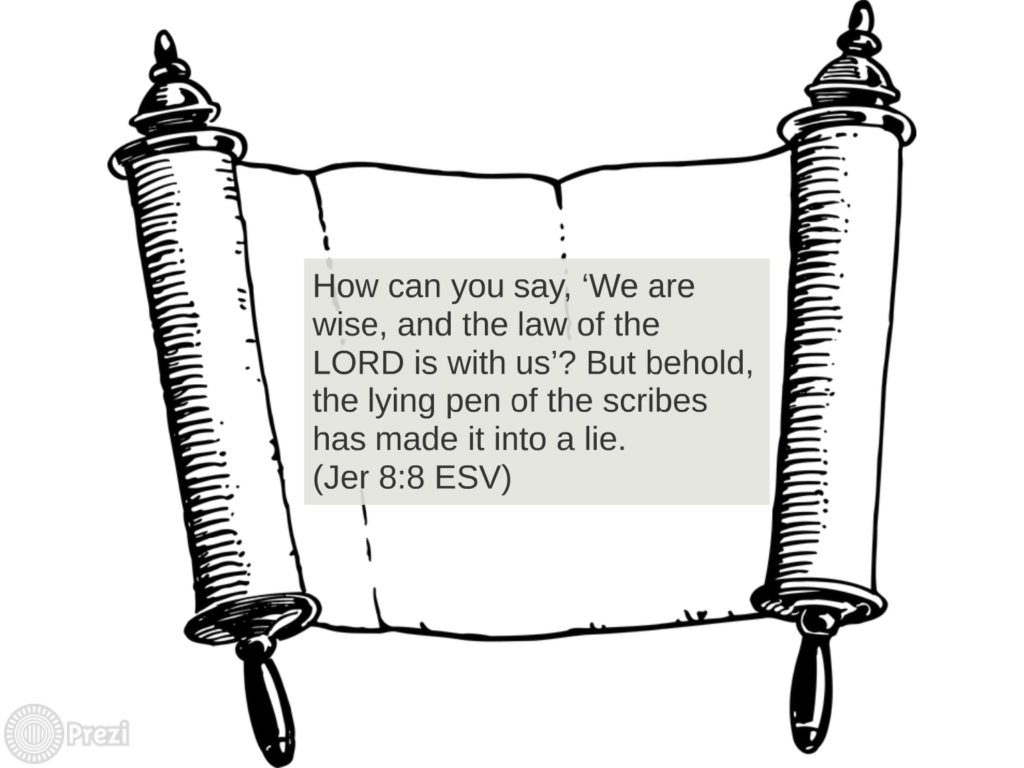
When Samuel the Lamanite proclaimed the signs for Christ’s birth and death, the wayward Nephites thought that the believers would serve them alternate facts: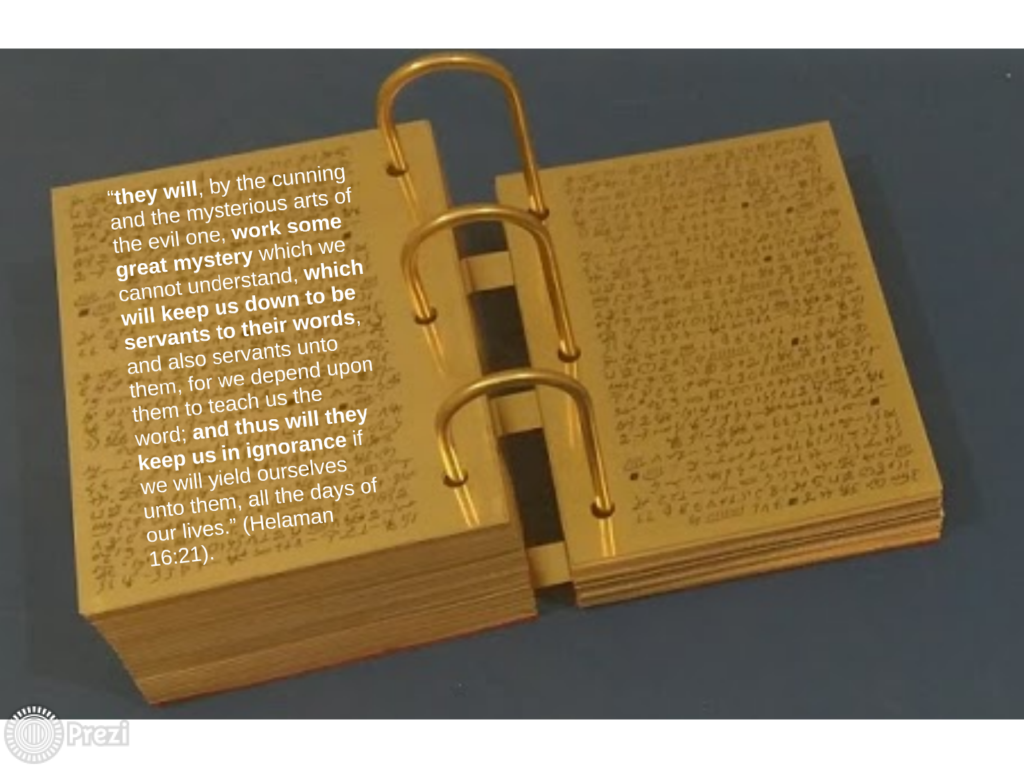
When Jesus was resurrected, the critics claimed: “His disciples came by night, and stole him away while we slept.” Matt. 28:13
And don’t get me started about the different versions of who Joseph Smith was and what he did. Fake news is as old as one guy telling another his version of a story. Nevertheless, some things have changed. In the early days of Christianity, the book scroll was substituted by the codex.

This meant that books, though still tedious in production and expensive to obtain, became available to more people, and novels became far more widespread than they were before. For early Christianity, the switch to the new medium became a selling argument, but also apocrypha and pseudepigrapha, or as we would say today, “historic novels” became a rave, though less than 10% of the population could read.
In those days, the precursors of newspapers were the Acta Diurna, which were government bulletins carved in metal or stone and posted in public places.
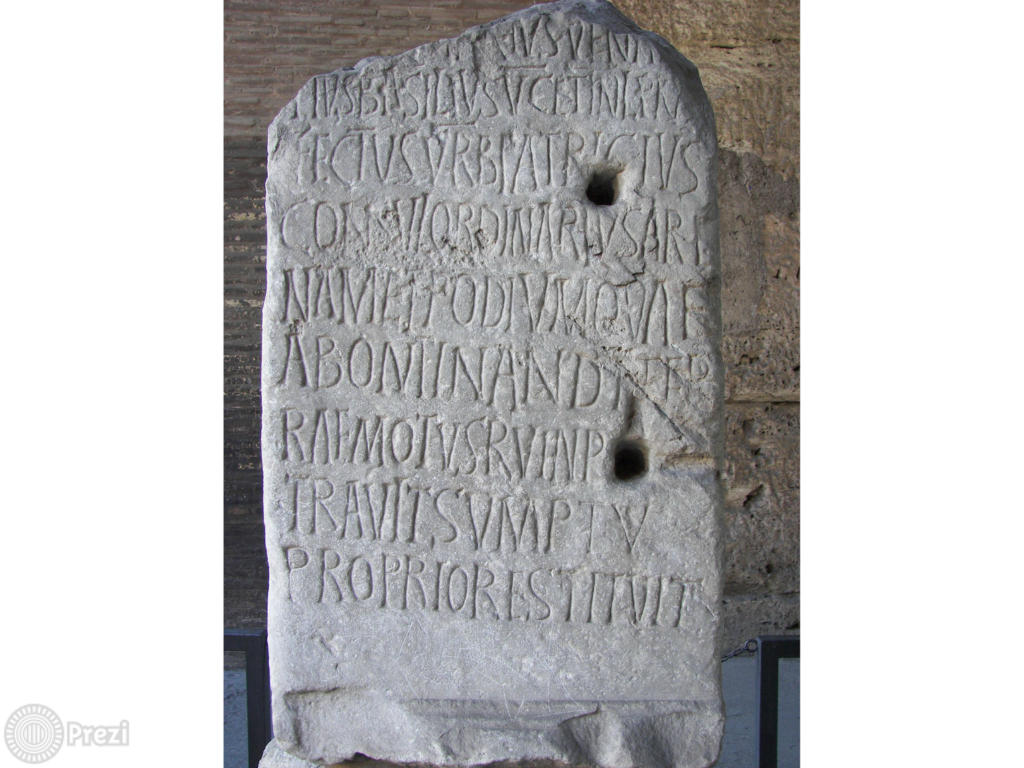
Writing books was something for the learned and wealthy. Written news only came through the government. That didn’t make them true, but at least they were consistent. In the 16th century, the first weekly news were handwritten, but they, too, only were for the intelligentsia.
This changed, when Gutenberg invented the printing press, and book production became far cheaper and easier. Not only was the world flooded with bibles, also the first printed newspapers where published in Germany. For a hundred years, those news were heavily censored by the government.

And we know that for many families, the only book they ever owned was the bible.
With the invention of the high speed press in the early 19th century, information became cheap for the first time. And late that century, lots of people went into publishing their own magazine or newspaper. While the early newspapers had targeted the intelligentsia, the New Journalism was made for the masses.
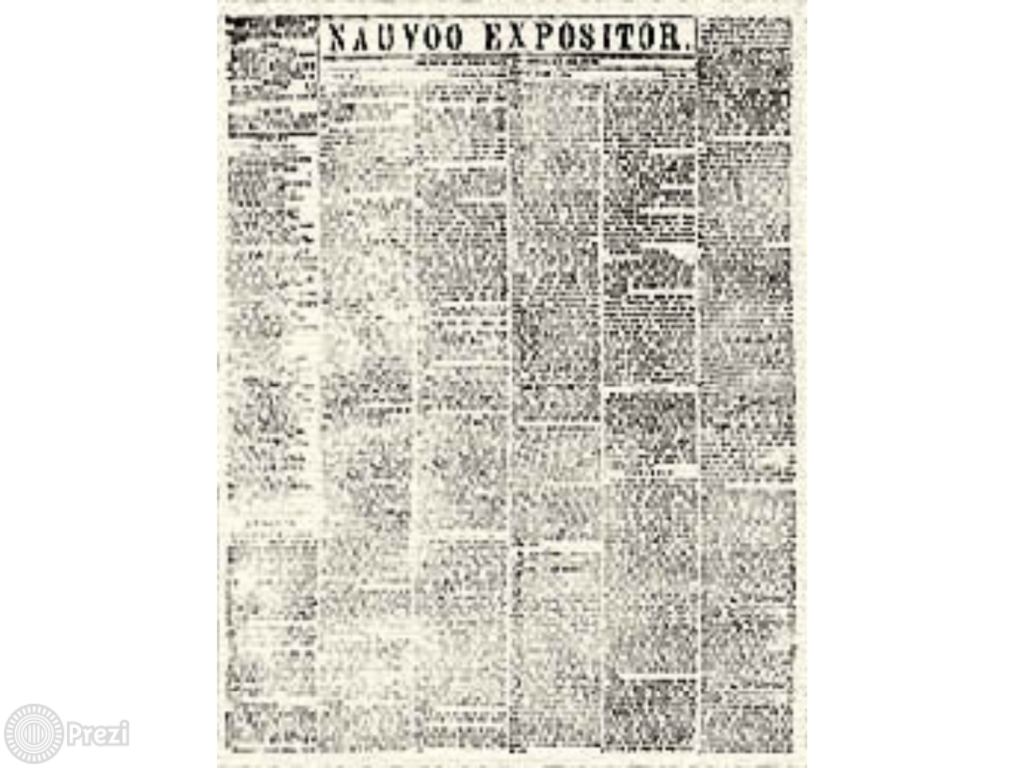
This led to a rise in propaganda.
In our days, we are inundated in a mass of blogs, advertisements and partisan texts published almost without cost via the internet. There are hoaxes that are believed to be real, and real information that people claim are fake news. Academic studies and research are published on the fast track, and often the real quality is doubtful.
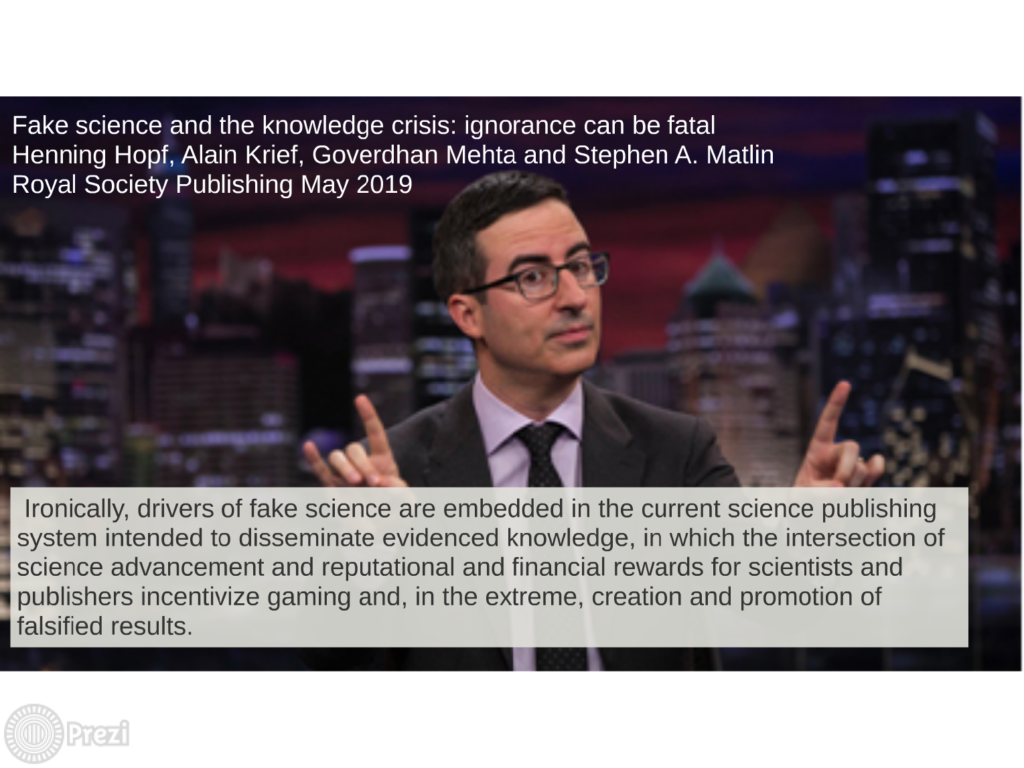
My motivation for this presentation came last year, when someone copied the look and feel of mormonnewsroom.org, used a URL that differed from the official one by only a dash, and there published the fake news that President Nelson had apologized for the priesthood ban. Though this was against what I personally believe, I was fooled, because I trusted the source, and I hadn’t noticed the slight difference in URL.
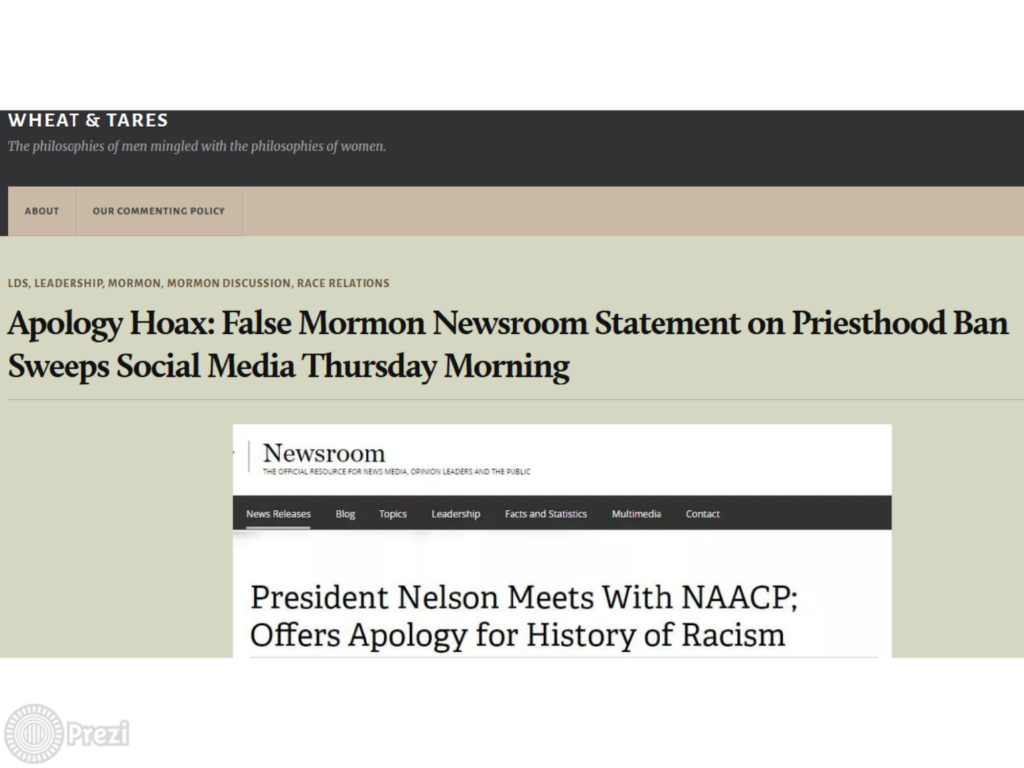
It was the first time in 20 years that I fell for an internet hoax. And it made me think. How do we know if an information we receive is trustworthy or not?
A few years ago, someone claimed that modern genetics had proven that the Book of Mormon was true. Another case is that of apostates who claim to be the new prophets, and that the First Presidencies and the apostles have lost the way in the past, and that they have to set the church straight. Cassandra Hedelius talked about those a few conferences ago.
Before the spring General Conference this year, the ‘net was full of speculations about changes in the church. One rumor, which really got traction, was about missionary callings, whose duration would be announced after General Conference, firing up the imagination. People thought that this would mean shorter mission periods.
The majority of the Baby-Boomers, millennials and students cannot discern advertisments from real information, and a majority cannot discern news from fake news.
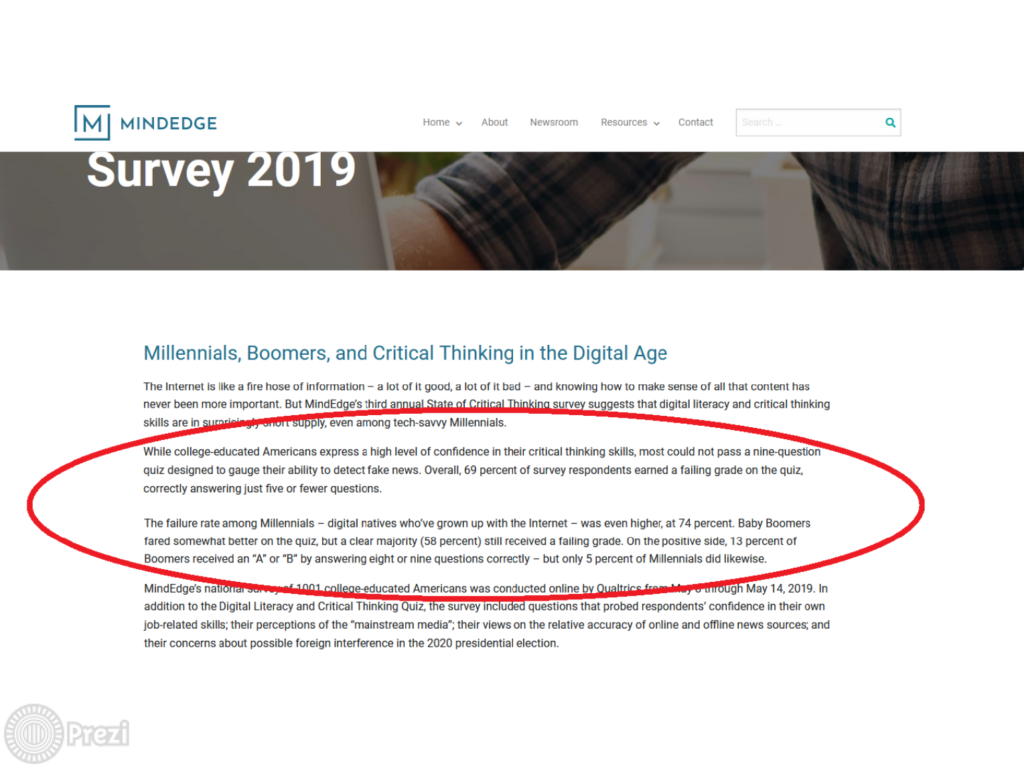

With Pilate, we may ask: “What is truth”?
How do we discern, how do we evaluate, how do we understand?
Faster decision making
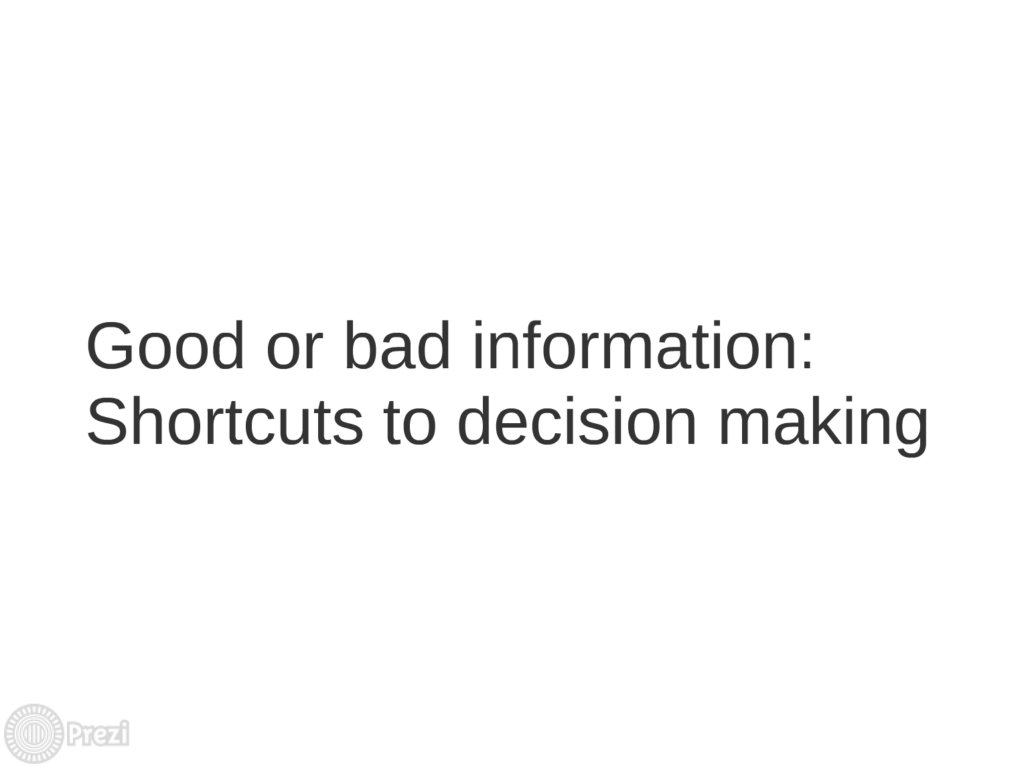
We live in the so-called information age. Information is the most important resource of our era. And it grows exponentially. The sum of all facts available has never been larger than in our days. On the other hand, this mass of data is impossible to manage let alone know for one person alone.
We live in an era of specialists. And every specialist only knows a small area of the wider academic picture.
Now, if some new information comes in, the best thing would be to value it on its own, to get to the bottom of things and then decide. But of course, with the mass of information being that vast, most of us cannot do that. So we use shortcuts.
Those shortcuts help us separate the wheat from the chaff and to focus on the important.
For instance, there’s the thing called “peer-review”. What do other experts in the area say about this claim?
If I am not an expert, it is very helpful for me to know if some claim is state-of-the-art and accepted fact, or if it is a minority position and the one promoting it is seen as a quack by accepted experts.
The alternative would be to become an expert myself, which is not possible on every given issue.
And yet, those shortcuts are not fool-proof.
- An article that didn’t go through peer review may contain very good information.
- Albert Einstein reviewed Quantum Mechanics with the famous words “God does not play dice.” And it seems he was wrong.
- In fact, there is a logical fallacy called Argumentum ad populum. It means that something is considered to be true because a majority of relevant people accept it. Which is basically what peer-review is all about, right?
- One could even argue that peer review is a heightened form of an ab autoritate argument : We accept what the majority of peers say, because we believe them to be authorities, not because of their arguments.
Nothing of this has anything to do with the information or argument brought forth itself.
Nevertheless, peer review gives us an indicator to discern quality in an area we are not experts in.
Hoaxes
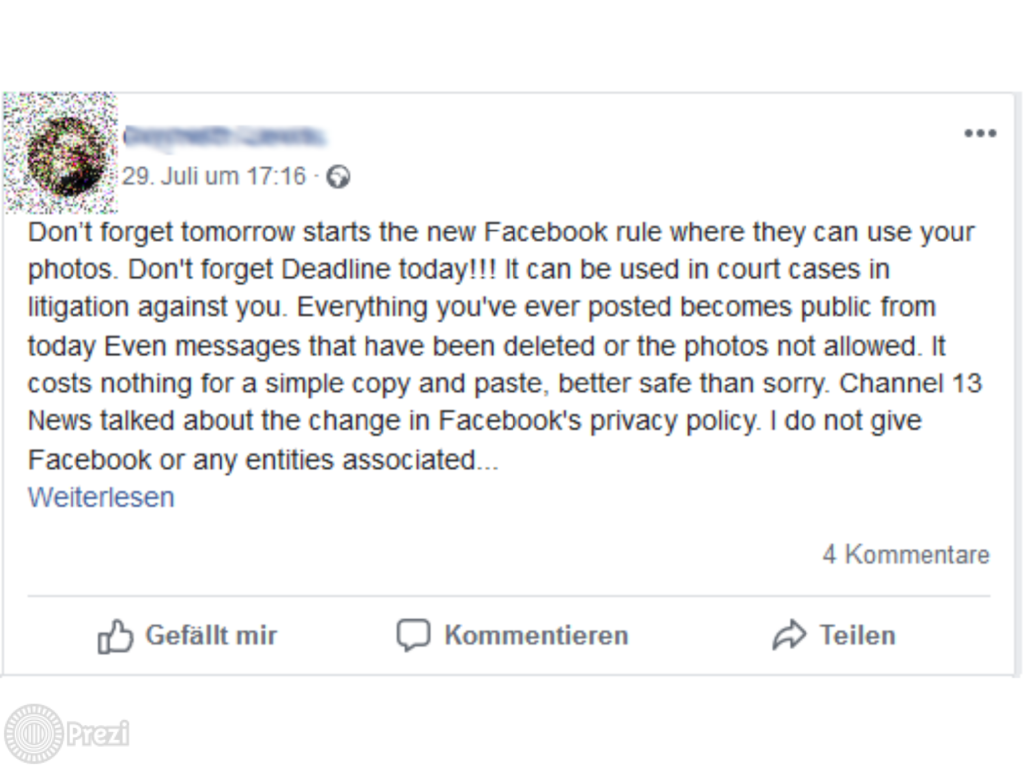
When emails came up, chain email hoaxes came, too. And with time, some indicators were promoted to discern the truth value of them. For instance, an eMail is most likely a hoax, if:
- Only relative dates are mentioned in the text (yesterday, last Monday,…)
- No contact address is given
- it contains technobabble obviously not intelligible for most of the audience
- A prominent player is called as source, but no details are given
Even with shortcuts, this takes time, and we need to be able to not be “tossed and blown about by every wind“, while finding our way through the shallows of information.
So today, I will focus on these issues: How can we assess sources on the internet, what impact can this have on us, and how to deal with it.
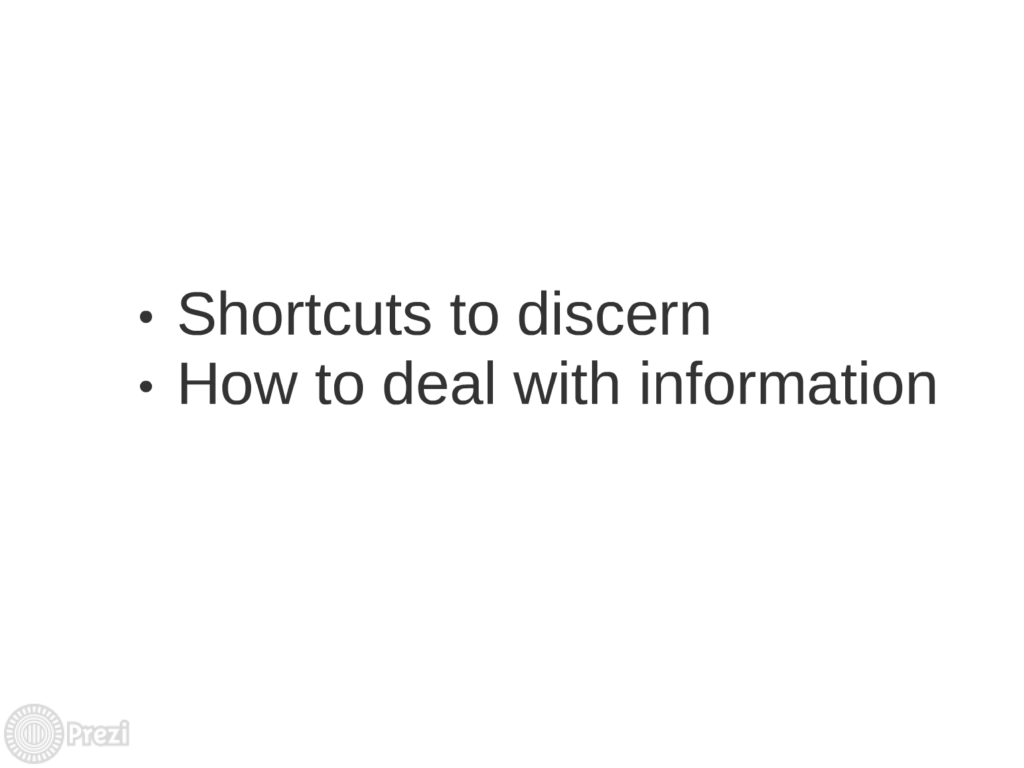
Manipulation
It is well known that it is hard work to lie consistently. There are many markers that show up when someone tells a lie face to face. Some will exaggerate their mimic and gestures, others will reduce those nonverbal signs. But in all cases, they want to be believed.
It is a common fact that emotions have a much bigger part in our decision making than most of us feel comfortable with, and often we rationalize our emotional decision after the fact.
That’s why those who try to sell their lies will try to circumvent our logic as quickly as possible, so that we can be brought to an emotional decision without realising it.
Those people are like stage magicians who try to spotlight their right hand, so that we do not see what they do with their left.

To make this more clear, let me share a personal story.
My story
I was baptized in the Lord’s Church at age 8, and by 9 my mother made us leave the church and I had First Communion as a Catholic, attended altar boy school and so on. Having read the New Testament earlier, at age 10 I read the OT from cover to cover for the first time.
At the age of twelve, I started to investigate religion on my own. I met with Lutherans and JW, read the Talmud and the Qu’ran. I found a Book Mormon when I was 13.
My father was very philosophically inclined agnostic who taught me that we need to experiment, in order to check, if theories hold water or not. So I was impressed, when I read Moroni’s promise, as this was clearly an experiment! And I learned by it, that God is really there. That He answers prayers. That Jesus is the Christ, and that I needed to return to the Restored Church. I did.
Six months later, my parents were away for a week. It was night, I was bored, and searching for something to do. I found my very first antimormon book.
I would neer have found it, if my father had kept it in his library of 3000 books. But he had hidden it his wardrobe, under the slide projector.
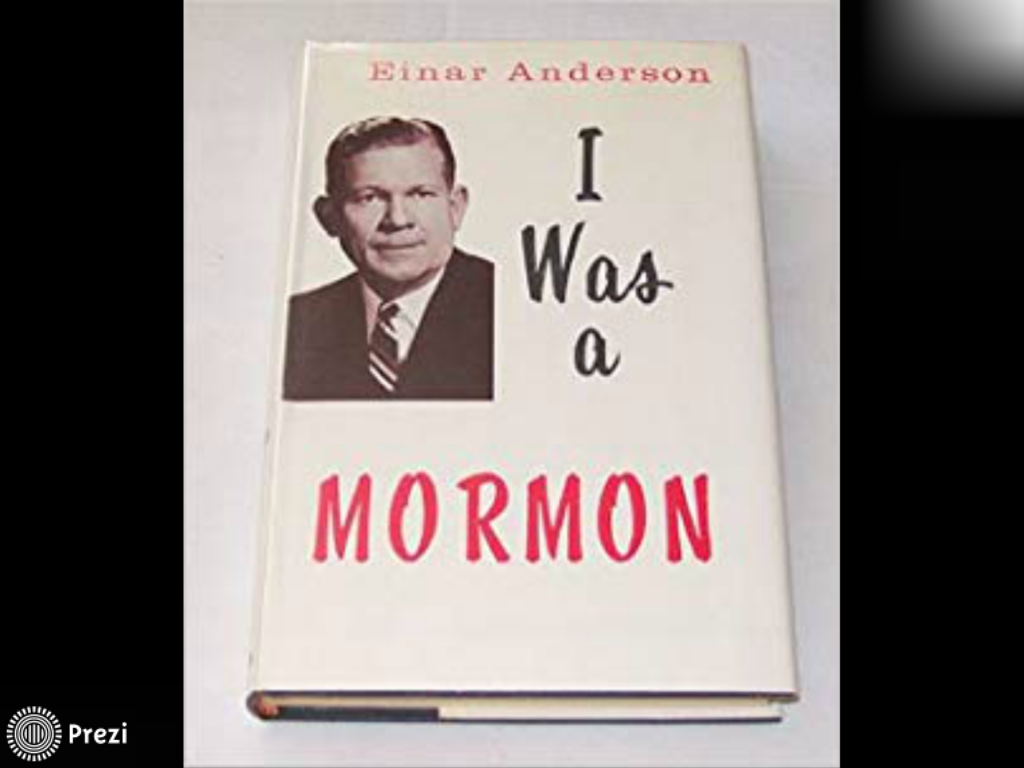
The author claimed he was an expert, a former priest of the Church.
I read it from cover to cover within two hours.
I was devastated.
There was so much in the book that I had never heard of before. And it was all bad. Reading, I felt my heart start to race, I couldn’t breathe, my thoughts raced in circles. Was my new life of faith all built upon lies? Basically, I was in panic.
Before I tell you how I dealt with all this and came out stronger, let me show you a few indicators that would have helped me back then, but which I did not know.
Proposed Indicators
Overstating of credentials
Einar Andersen claimed to be an expert in all things Latter-day Saint. As a proof for his expertise, he claimed to have been a “Mormon priest.” Now, if we are talking about a Catholic priest, we know that this is a person who has studied theology at university and holds a degree. We are talking about a well-informed person who, aside from his theological studies, has also attended a Catholic priest seminary for several years. But in a Latter-day Saint context, an adult who claims he was a priest, is a person who left the church before his 18th birthday! No university study of theology, no priest seminary! In fact, he probably was already not very active before he left. It is a lie.
Overstating the credentials is also commonly done, think, for instance, of Doctor Philastus Hurlburt or “Dr.” Walter Martin.
A million pin pricks
The book was full of claims I had never heard of before. Also, it was full of accusatory questions.
This is a favorite technique to make someone panic in order to get an emotional reaction. Do you remember when in school or university you had to read a ton of text so massive that even looking at the pile of paper you automatically went into dummy mode, where you didn’t understand anything anymore, not because the text was a problem, but because you were overloaded with the sheer amount of information? I couldn’t find an English word for it, but in German we call it Dokumentenschock: Document Shock.
The same overload happens in good old email hoaxes, when technobabble is used. If there are enough words in a text that we can hardly understand, it leads us to accepting the author as an expert, because he sounds so knowledgeable and intelligent and we know nothing. Dummy mode.
This can also be accomplished by feeding the reader a large number of totally unimportant but unknown “factoids”, thus bypassing the rational brain and directly accessing the emotions.
Ex-Mormon anthropologist Manuel W. Padro commented about this on Quora, saying:
_This tactic_ of intentionally luring Latter-Day Saints into a situation where they are _bombarded with questions_ they don’t know how to _answer is a documented tactic_ used by these groups [..] and even before it was documented it was clearly going on.
[..]
When I was a kid, the Lighthouse Ministry and CARM were the two big groups using this strategy. Now Mormon Stories, the Life After Ministry, Mormonthink and a number of other groups are all relying on the same abusive tactic. They are trying to coerce you into a situation where they can bombard you with so many doubt-provoking questions that they can *cause your resolve to collapse* and your *identity to fall apart.* Inside of that vacuum, created by an *act of psychological rape*, they hope to impregnate you with their own belief system.
*If that sounds abusive, it’s because that’s what it is.* It’s an extension of the cultural legacy of the inquisition. They can’t torture you, but they can humiliate you and pressure you with questions you don’t have an answer to yet. They try to hit you up with too many of these questions to answer, because if they don’t it wouldn’t work. That’s how the CES Letter works. It’s garbage but it’s a common strategy in the anti-mormon ministry.
Factoids
I once listened to an Italian radio broadcast. The announcer talked extremely fast, and I wondered, how he could manage that. But on listening carefully, I heard that after every sentence, he would simply say “lalalala”. If you only had the radio as a background noise, you would not notice that there was nothing behind it all.
If you want to overwhelm someone with mass, each argument per se is irrelevant. As long as you have the word count and enough question marks, you will reach your goal. But if the reader really takes apart one argument after the other, nothing remains. This smoke without fire, these “lalala” arguments I call “factoids”. My first antimormon book was full of factoids.
Let me give you an example from the factoid omnium-gatherum of our days, the CES Letter.
For instance, one critique is that the Book of Mormon, when quoting Isaiah, incorporates italicized words as if they were part of the original language, which they are not.
The following example is given:
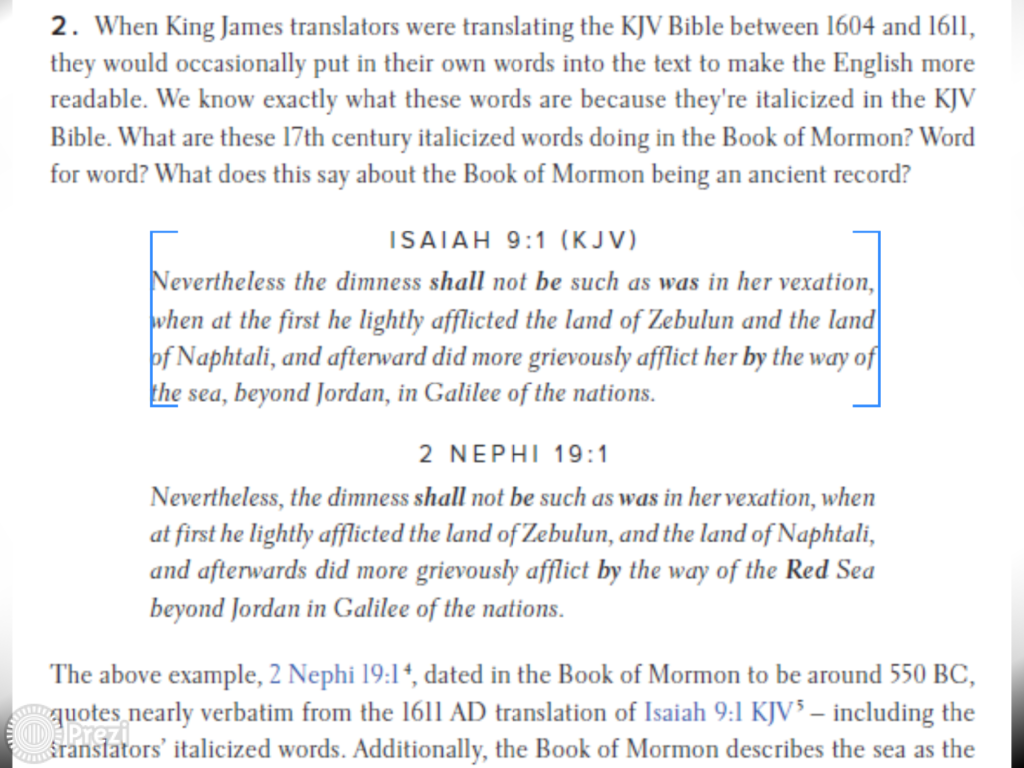
Fascinating! Joseph incorporated words in his so-called translation that were not in the text to begin with!
Let’s try to read the first sentence of this verse, and let’s omit the italicized words:
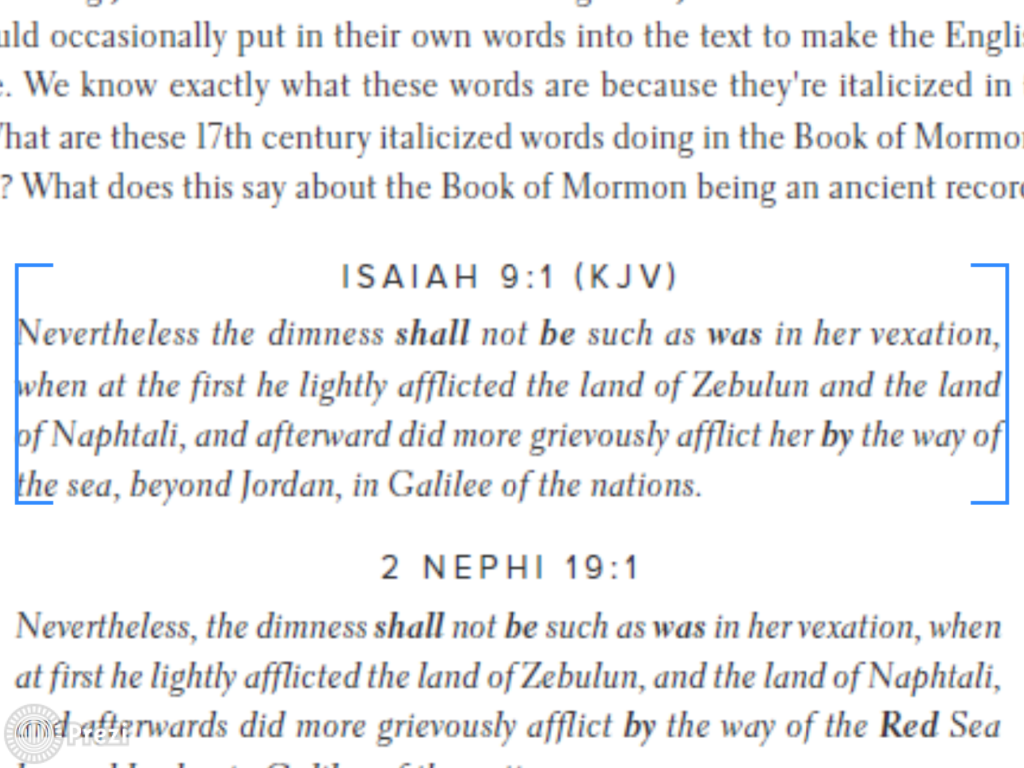
Nevertheless the dimness not such as in her vexation
That’s not English! Those italicized words are not in the original language, because they are not necessary there, but to have a grammatically correct and intelligible translation, we have to add them! And Joseph did just that. He could not not incorporate them!
So, all Runnells does here, is throw out accusations in the hope that the reader will go into dummy mode.
Tables, charts and visualisations
We live in a time where a picture is easy to produce, and a picture says more than thousand words. When a table is produced, many people count the items on the table, but they do not read the words anymore. We see checkmarks in columns, and we count the checkmarks, but we do not try to understand what the table or the chart really tells us. I mean, why would someone do the effort of producing a visualization and then not be careful and honest with the contents, right?
Right.
So, usage of tables, charts and other visualizations per se is not of the devil, so to speak, but whenever you see such a thing, don’t skim over it. Go into detail. Take it as an invitation to be more careful with the information, and not to accept it, simply because it is visualized.
Onesidedness
We heard about onesidedness yesterday.
If a text is onesided for no good reason, be careful to accept the picture painted.
A good example from the CESLetter is Book of Mormon Geography. A critic of the church, Vernal Holley produced a book of Mormon map from the Great Lakes area in 1983. He claimed that not only does the Book of Mormon geography fit with this modern map, but also, that Joseph Smith derived the names of cities and landmarks from real towns and landmarks in the area.
This was debunked immediately. Runnells knows this. He even agrees that his argument is very weak and the replies are far stronger:
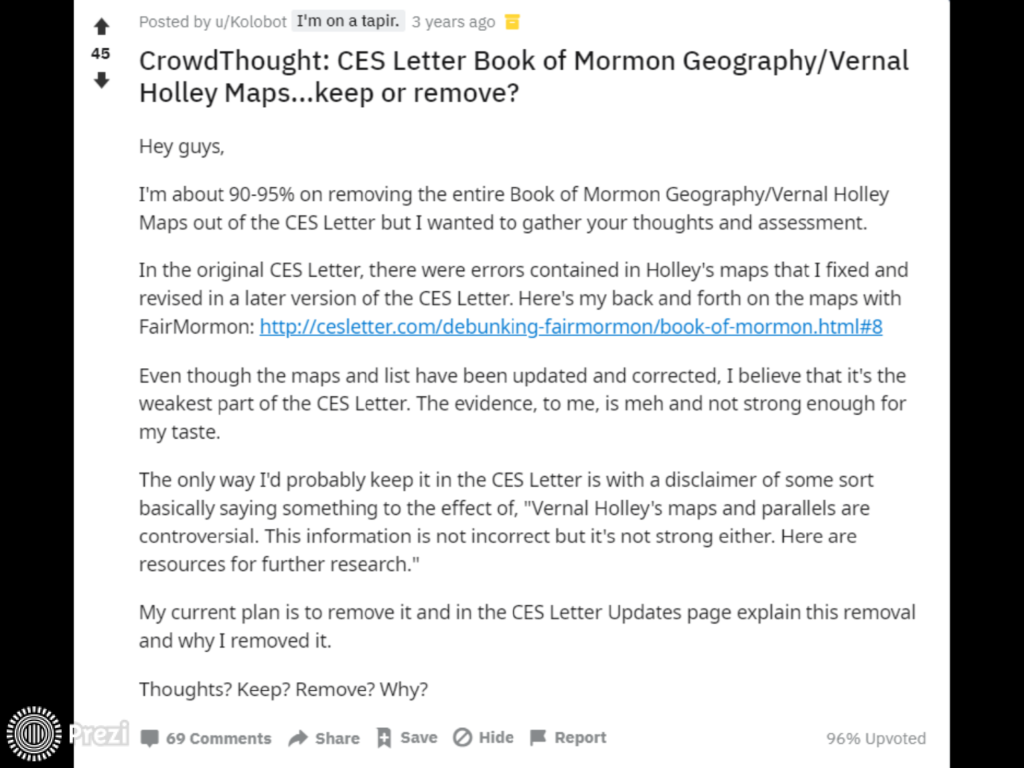
Yet he never mentions that. He presents a weak argument as if it was strong, painting a very onesided picture just for the sake of it.
By the way: I downloaded the CES Letter last week to see if it contains the disclaimer Runnells talks about. I could not find it.
If something is too good to be true, it most likely isn’t
Assume that someone claims to have found the following Mayan sign from the late pre-classic period:
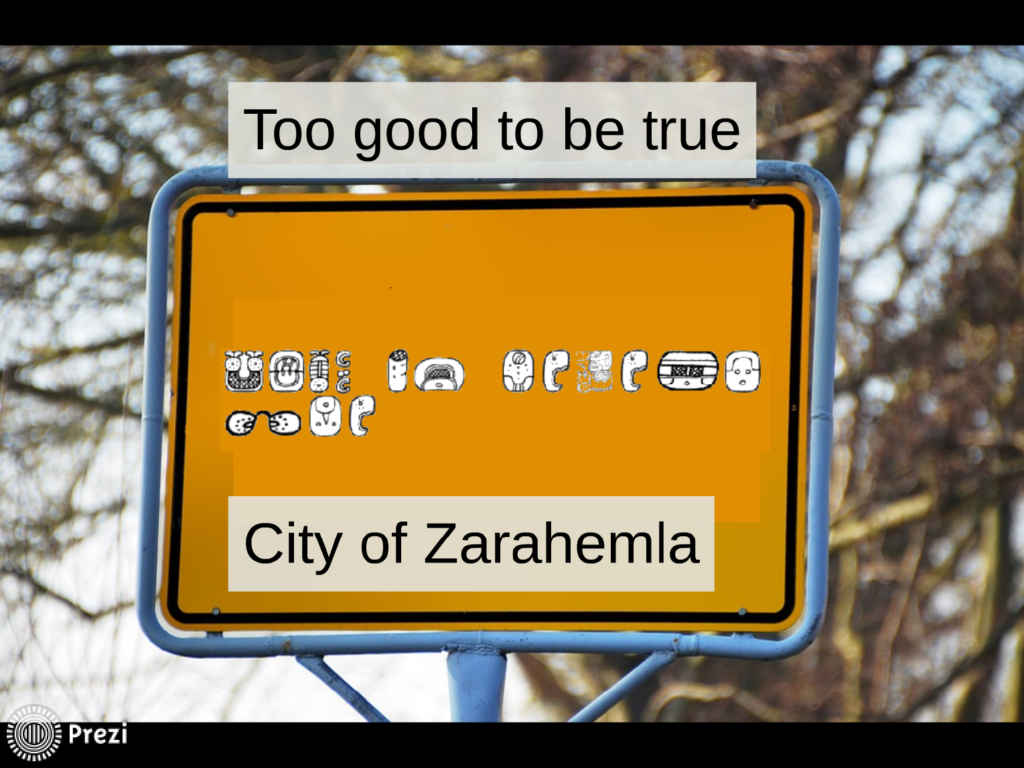
What would be your gut reaction?
Mine would be: “This is too good to be true!”
Some people use this expression to show their glee at a bullsey they thought was never coming.
To me, this is a warning signal. If it is too good to be true, then it most likely is not true. It’s a sign to be careful with this information.
The claim I mentioned earlier that geneticists have allegedly proven that American Indians come from the Middle East at around 600 BC falls under this category.
Be careful, be wary, if something sounds too good to be true.
If something is too bad to be true, it most likely isn’t
I once read a claim that that the First Presidency is conducting secret satanic ceremonies with lizard aliens in the caves beyond the Salt Lake temple. That claim really seems out there. But there are people who believe it. Even though it is easily identified as too bad to be true.
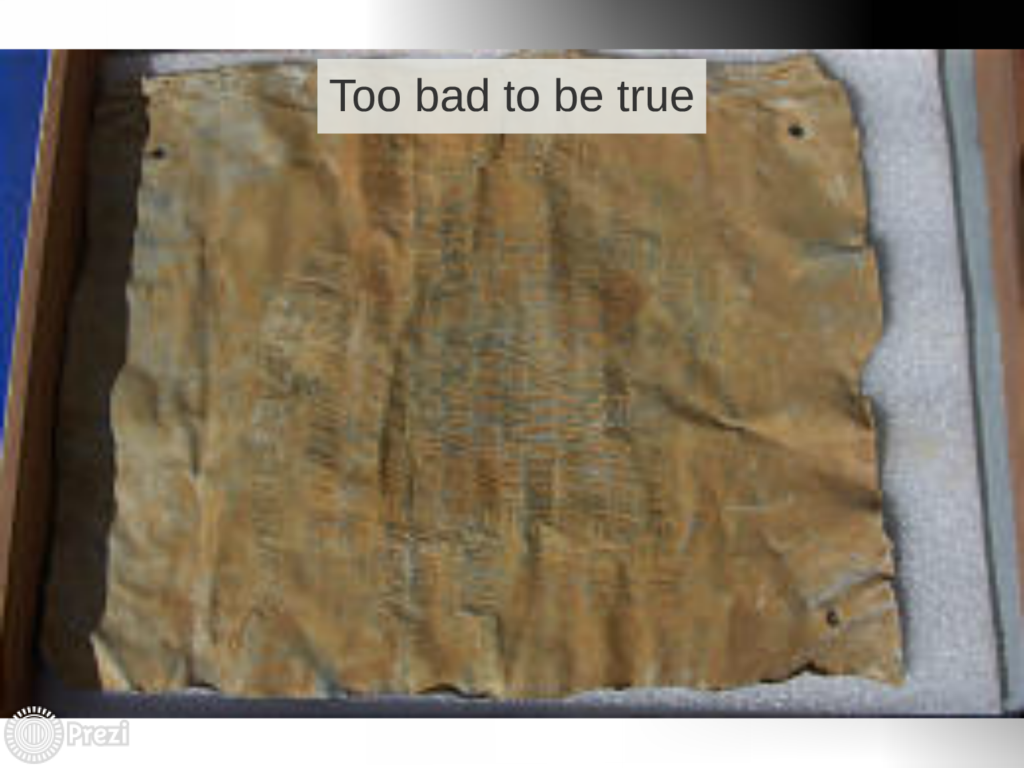
A not so crazy example was the lead plate purportedly written by John D. Lee,claiming that Brigham Young ordered the Mountain Meadows Massacre? This would not be a sign of a derailed mind, like with the lizard aliens, but nevertheless, it felt too bad to be true. And it wasn’t true.
Emotions
One exmormon told me that when faced with antimormonism for the first time, he felt like the guy in the old R.E.M. song: “Losing my religion”.
It took me long to shake this emotional picture. Appealing to feelings alone is a very simple way to circumvent our logical brain and go directly to emotional decision making.
So, listen to your emotions. Are they being manipulated by the text you are reading? How? If you actively take away your emotions, is the text still compelling? Does the author try too hard to raise emotions?
First Vision
Time for another example from the CESLetter:
Despite knowing there is no smoking gun, while wanting to make his readers believe there were one, Runnells calls one of his chapters: „First Vision – Concerns & Questions“. But then he sets the stage by quoting President Hinckley as you can see here:
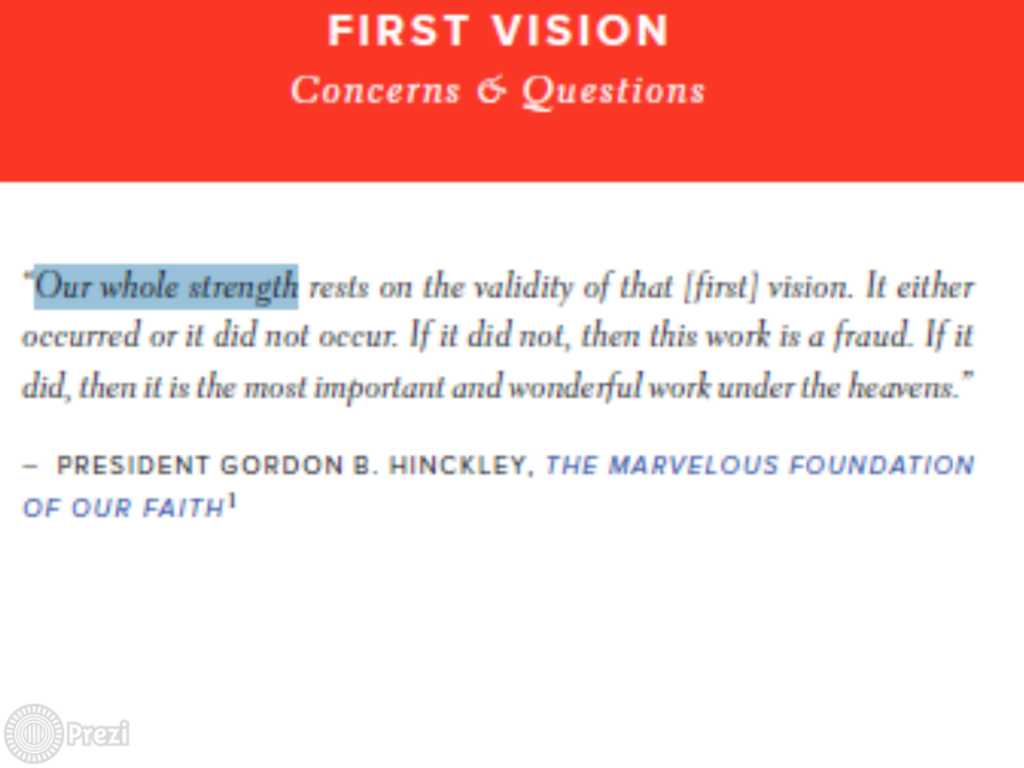
The reader now expects the smoking gun. Stakes are high, reader’s capacity to reason is reduced.
Next we are told, that there are 4 accounts the Church admits to, there could be more, and the Church did that not earlier than 2013.
The implication is that „the church lied“, until it could not uphold the lie anymore, but still it is portrayed as not open and honest.
While the Church actually has been publishing about the 1832 account at least since 1972 (the last of the 4 accounts to be known to the public), the reader goes away with the assumption that the Church is very late to the party.
Next, Runnells quotes only 15% of the 1832 account, and then writes conclusions and questions and concerns about it that are longer than the whole 1832 account itself.
The questions are designed to raise negative emotions, and Runnells provides the most damning answers possible. For instance:

Also, he only compares the 1832 and the official account, leaving the other two untouched, and then makes the following conclusion:

This is relevant, as he now links back the „rock in the hat story“ with the unsuspicious claim from the beginning („there are 4 accounts“). And he blames the Church for everything.
Now, obviously, it is only reasonable to teach an investigator the basics, and not every minutia of church history. But by the way the stage has been set, the reader is most likely already in awe about all that he did not know, and his rational abilities are already reduced.
He is set up to accept that logic disproves the First Vision. But nothing like this has happened.
Joseph’s Polygamy
Let’s look at another argument where Runnells tries to fool his readers.

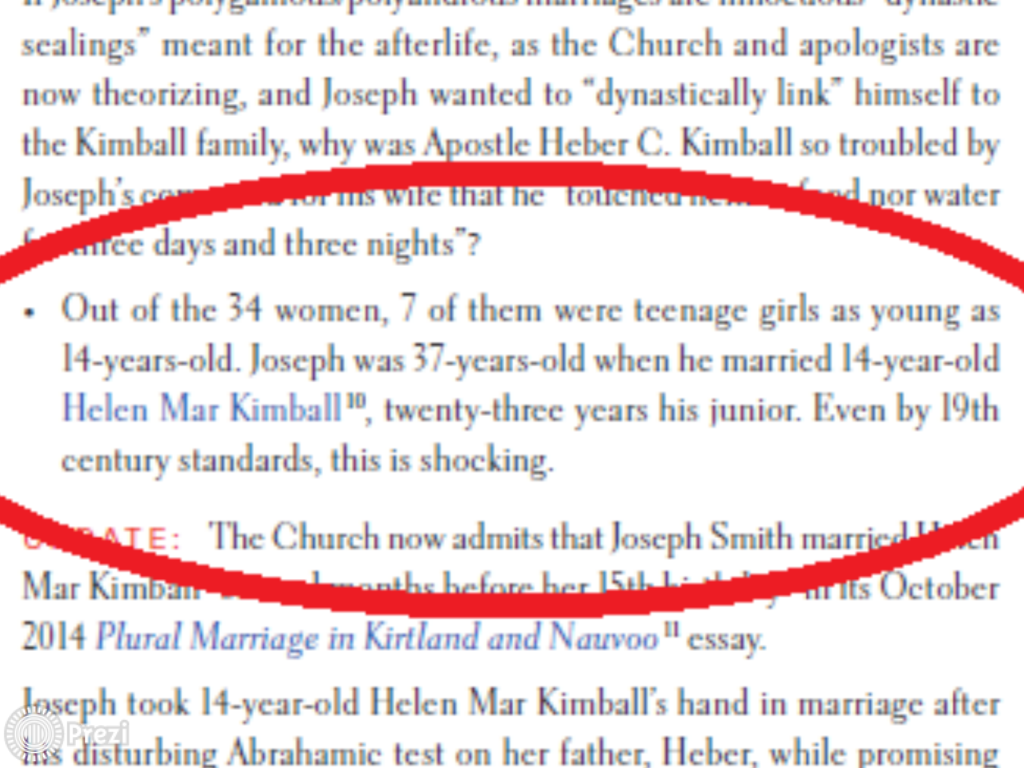
While technically there is correct information here– two of the women sealed to Joseph were a few weeks short of 15 years, 3 of them were 19 and 3 were well over 17, the picture painted is wrong: All of this is shocking, while in fact, only two sealings could be shocking to modern sensibilities. In 1880, the age of consent was set at 10 or 12 in most states, with the exception of Delaware where it was 7. Most of the states didn’t have a minimum marriage age back then.
And Wikipedia tells us that such a marriage is not illegal today in the US:
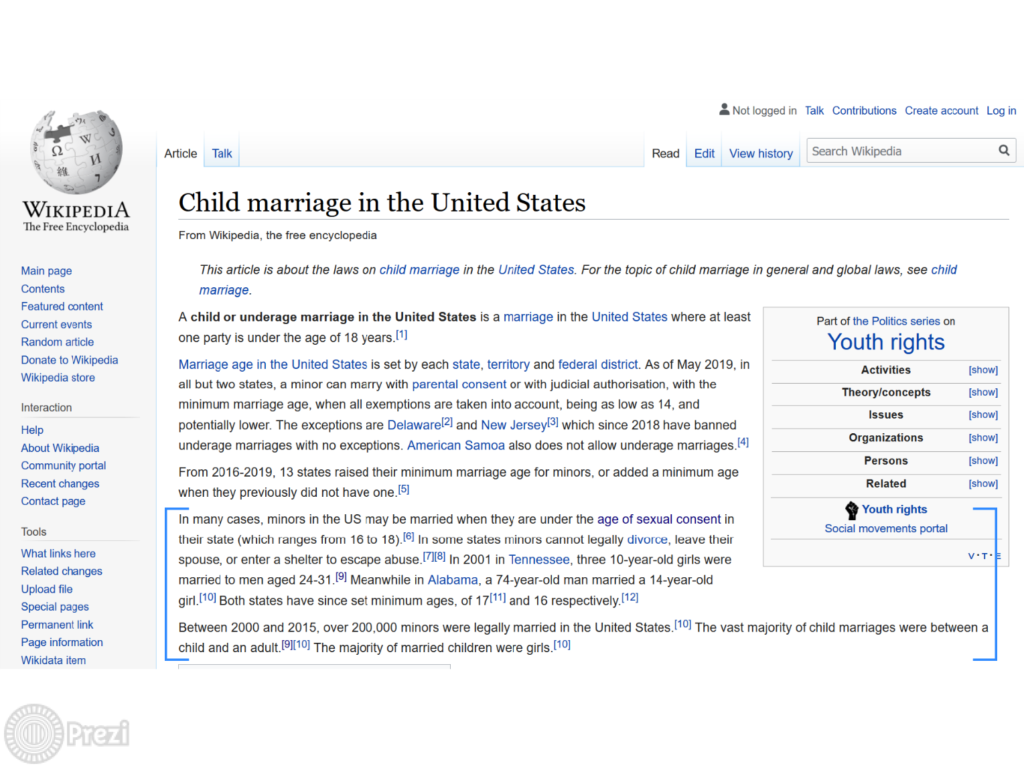

And it happens. Between 2000 and 2015, 31 guys over the age of 60 married underaged girls.
Also, he leaves out the fact that Joseph Smith also was sealed to women who were older than he, the oldest being 78 years, which is double the age of Joseph at that time. Clearly, such a marriage would have been seen as equally shocking by today’s standards, but Runnells exclusively focusses on the sealings where the woman was a teen. Why? Because of the shock value.
Joseph being sealed to old women would destroy the carefully painted picture of Joseph’s interest in plural marriage for the sex alone. Thus, this fact is left out.
Runnels claims that Joseph coerced the women:
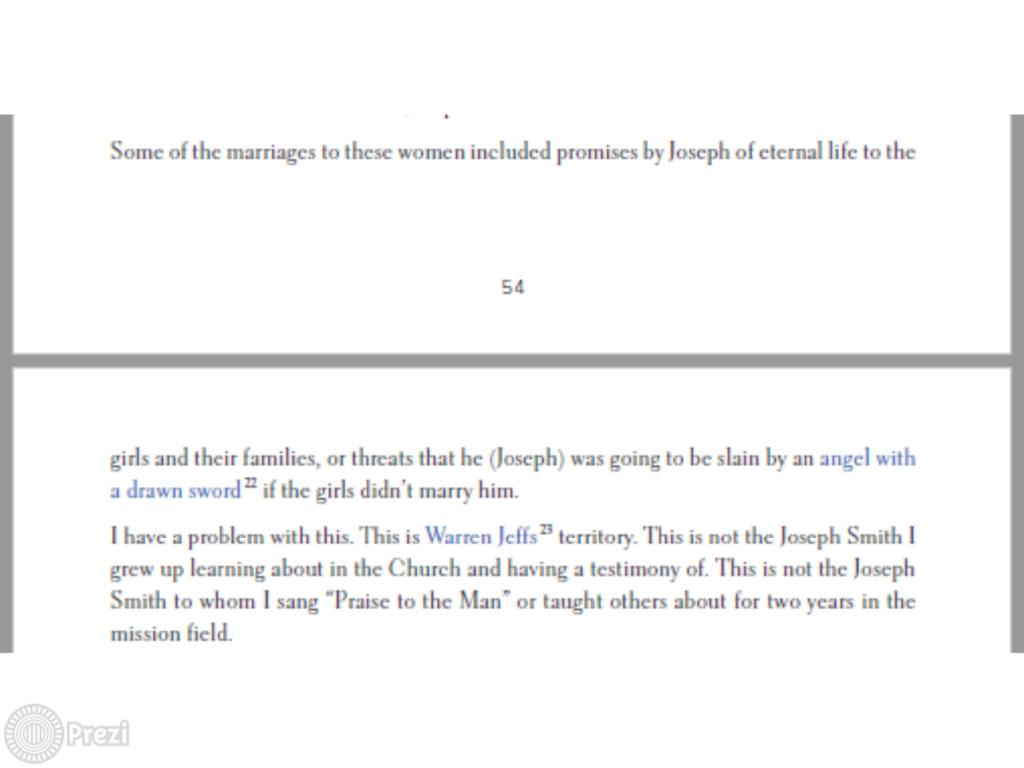
The story told is clear: Joseph, the sexual predator threatened the unsuspecting girls (from Runnnells claims we „know“ they were 14 year old) that Joseph would be killed by an angel with a drawn sword, if they would not marry him.
This manipulation is then likened to Warren Jeffs. Again, Joseph is shown to be a predator.
And the reader is left wondering: “How could Joseph convince them with such a phony argument?”
The thought processes in answer to that question usually include:
- He was very charismatic and therefore brainwashed his followers into doing whatever he wanted
- They were gullible idiots
- Possibly, it was because they were minors, and Joseph was a sexual predator, preying on the weak.
- The intelligent reaction would have been to vote with their feet.
- Thus, this is what I will do, because I am neither gullible nor an idiot.
This retelling does not do justice to the women in question.
I love what Mary Elizabeth Rollins had to add to this, as she is the main eye witness to the statement about an angel with a sword. In her retellings, she reacts like a normal human being:
- “Well,” said I, “don’t you think it was an angel of the devil that told you these things?”
- I did not believe.
- I would never be sealed to him until I had a witness.
- “If God told you that, why does he not tell me?”
So, these are reactions like any other woman would have. Perfectly healthy, perfectly normal reactions for a 24 year old married woman (Mary was no teenager).
And Joseph does not force her to accept his superior connection to God, but rather lets her know that she, too, will see the angel and can ask him.
She sees the angel, and that’s why she agrees. Because she personally knows, this is of God!
Now, in this retelling, one has to accept that there are angels. But the persons acting in this story are normal, intelligent beings, acting like any other would in this situation.
By the way, Mary is one of the cases where we have no evidence that there were sexual relations between her and Joseph.
In this retelling, there is no reason to vote with your feet, no reason to feel superior to Mary by leaving, and no reason to feel lied to. No reason to feel stupid for not leaving. Joseph did not prey on women, and especially not on a teenager, anit was not about sex.
Our emotions can rest, and we can use reason to value the information.
Back to my story
As I already said, I was in panic. And everybody knows that panic is not the most contemplative state of mind. Only an emotional decision can come from panic.
Giles & Densley
Now, some of you may remember last year’s presentation „Barriers to Belief: Mental Distress and Disaffection from the Church“ by Geret Giles and Steve Densley.
For instance, an anxious person will react to information that endangers his world view in a different way than a non-anxious person will. Anxiety is detrimental to faith.
Further, they highlighted cognitive dissonance, saying,
Anxiety may also arise when new information conflicts with old. This conflict may make it unclear how to proceed and result in inconsistent thoughts, beliefs or attitudes. Such internal conflict is often referred to as cognitive dissonance.
This is cognitive dissonance, the panic I felt as a youth. One could say that cognitive dissonance is induced anxiety in an otherwise non-anxious person.
Wizard’s First Rule
In a well-known fantasy novel, the following rule is described:
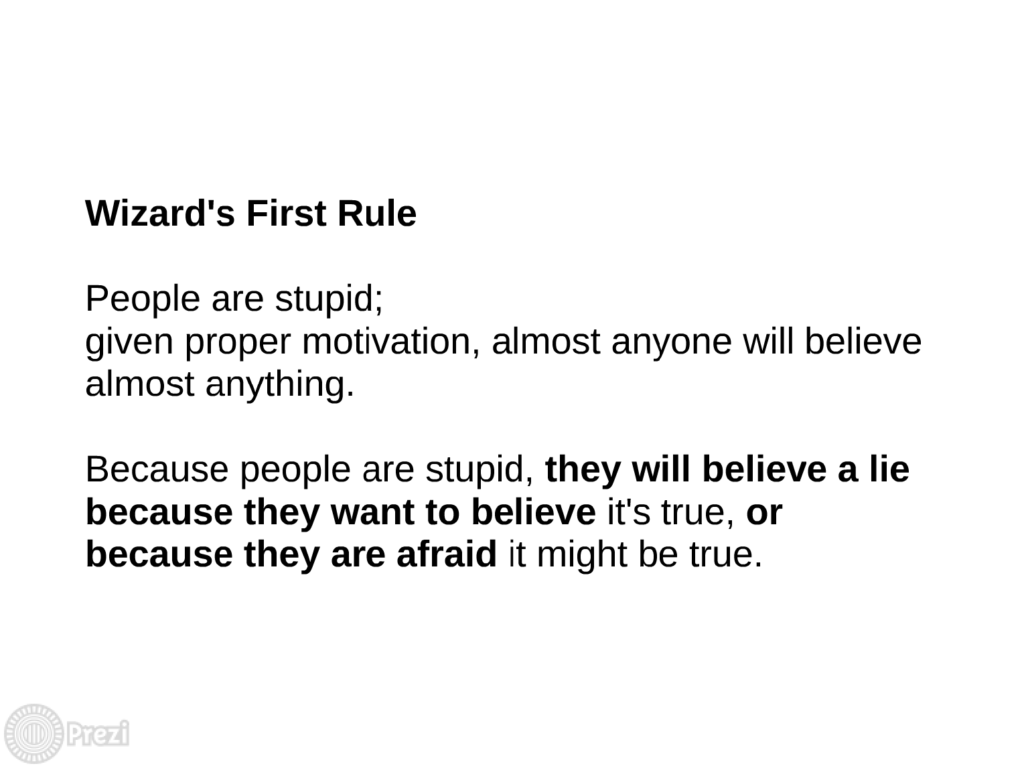
People will believe a lie because they want to believe it’s true, or because they are afraid it might be true.
On one hand, this has to do with how I approach a text. If I fear that the text is right, I will be more gullible. If I hope for it, ditto.
So, if someone can get another to fear that something could be true, half of the battle of convincing him is already won.
Thus fear leads to the dark side.
In those cases I have to be doubly critical.
Panic
Let me tell you something about panic.
Among other things, I am a beekeeper. Last year, we had one hive that was aggressive. I worked on that hive, and every 2 seconds a bee would fly against the veil, searching for a source of carbon dioxide to sting: My nose.
Now, if you want to know what it looks like when a bee finds this intended mark, here you go.

So, this was me one month before the events I tell you about now.
So I was working on this hive, when suddenly I noticed that there was a bee inside of my veil, and I panicked.
Panic is not a very contemplative state of mind, not good for logic and reasoning. It is a state where immidiate action is everything.
And act I did.
I tore off my veil, right in front of this very aggressive hive in an attempt to get away from the one bee that was inside of my protection…
I ended up with 14 stings to the head. Had I not panicked but acted rationally, I would have walked away, risking one sting at most.
When faced with cognitive dissonance because of some new information we get, it is good to remember that at the moment one is able to make logically sound decisions based on facts. Rather, one will make a purely emotional decision. But we believe that we are rational beings, so after the decision, we will look for facts to justify the decision as the only logical.
From new information to panic
So, how does new information that is in conflict lead to panic?
The topic must be important to us. And honestly, our religion not only defines how we see the world, but also it defines who we are in relation to God and to our next of kin. It defines a large part of our daily and weekly usage of time and money. It affects what we eat, how we dress, what we watch. It affects our relationships and our very being. That’s fairly important. Naturally, if this is threatened, it has a very big impact on us. The stakes are high. If something threatens our faith, it threatens us. Thus panic.
On the other hand, the faith of Latter-day Saints is not brittle.
But with sleights of hands described above, like for instance the million pin pricks, it can be done.
I have been lied to
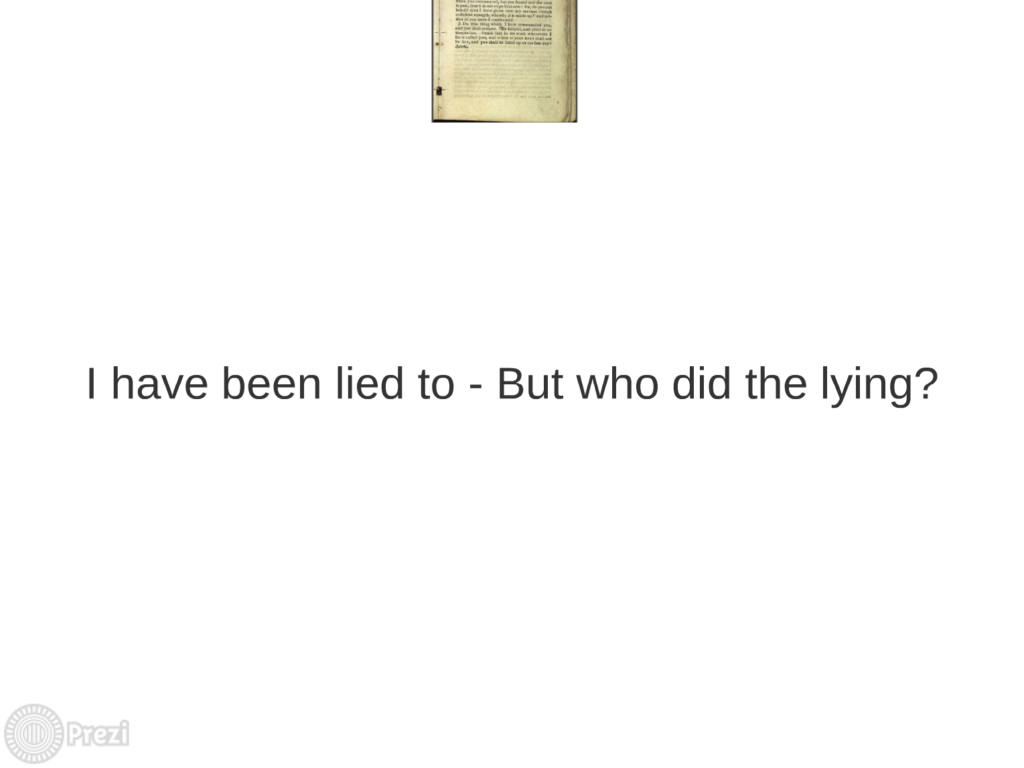
And this technique really is standard. It was used in „I was a Mormon“, it is the basis for „Letter to a CES Director“ and „Letter to my wife“. Usually, the sheer amount of perceived problems lets us exclaim: „I have been lied to.“
And isn’t this the standard claim we hear from those who left the Church?
I gave a fireside on the versions of the First Vision in Austria last year, and one guy claimed, „The church lied to us about this. I never knew that there was more than one version!“ So I asked him: „Who lied to you? Was it your primary teacher? Your Sunday School teacher? Your institute teacher? Your bishops?“ He agreed that none of them were the culprits.
I then showed him that in a book every long time church member in Austria owns,, two of the four versions are included, and the third was the canonical account. So the Church has published those accounts. Only the 1832 account had not been published in German, but it was published by church owned Deseret Books as early as 1972.
Nevertheless, this brother felt cheated. A natural reaction. If we do not know something we believe we are entitled to know, somebody needs to be blamed. And certainly it is not us.
But feeling cheated or having been lied to, is an emotional reaction.
Whenever we need a logical decision, we should monitor our emotions and make sure that they do not foreclose the decision.

In D&C 9:7-9 we are told to first study things out in our mind, and then ask God for confirmation, which often comes by emotions. So I am not saying: „Leave out your emotions when deciding something“, but rather, „use your rational mind first, and when you have done all you could, then it is time for emotions and then for revelation.“
Let me continue with how I did that back as a child and then close up with a few general rules.
How I kept my testimony
As I said, I was alone and in panic. There was no one to ask, I was all alone.
So I did the only thing I could do. I was certain that there is a God who answers prayers. So I knelt and prayed. „What shall I do, Father?“ and the answer was: „Read a chapter in the book of Mormon.“ – „Which one?“ – „Doesn’t matter.“
I did, and it calmed me down, but it didn’t solve the issue. So I prayed again: „What now?“ – „Take one chapter from the antimormon book, and look for things you know about. If the description is true, then the rest may be true, too. If not, why would you trust it?“
So that’s what I did. And I found the book wanting. For the moment this solved my problem, but I decided to study all those topics I knew nothing about, until I knew.
This situation and how I resolved it, started me on a life long journey of apologetics. I decided then to never again be caught unawares, not knowing things about my faith.
Here are my takeaways:
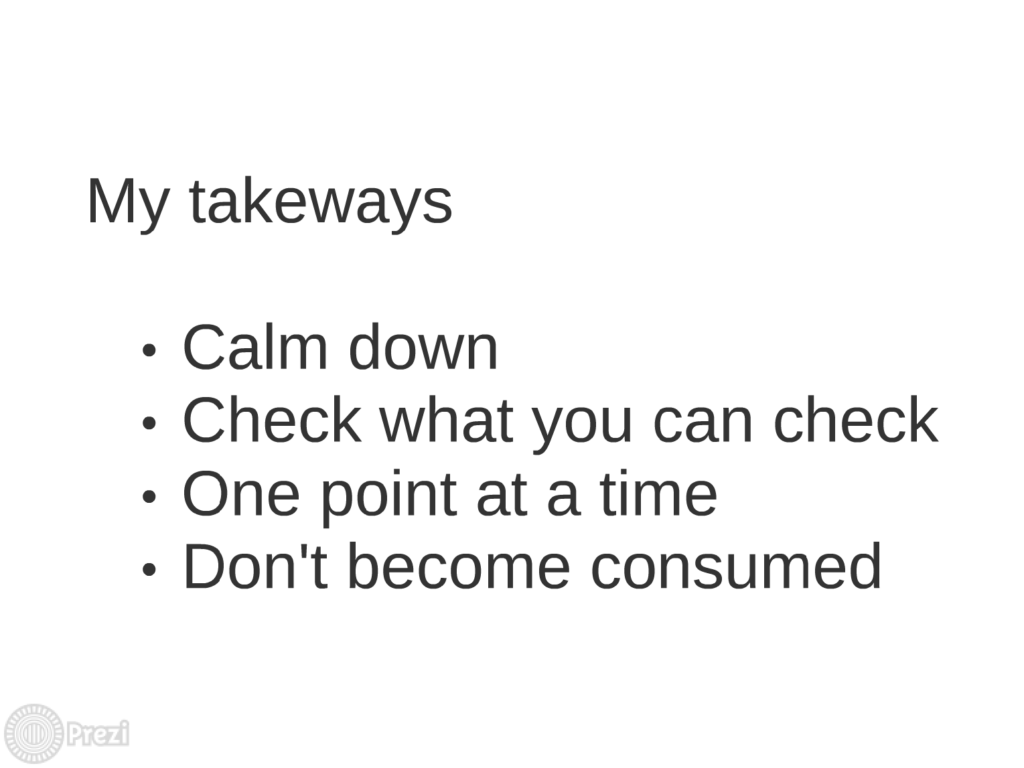
Calm down
While studying, monitor your emotions. Are you all calm? If not, do things that calm the stormy seas. Walk away from the topic for some time. Do things to get your equilibrium back. In my case, it was prayer and reading in the Book of Mormon.
Of course, you will stay calm longer and regain your equilibrium quicker, if you are in a good physical and mental situation to begin with. I do not read anitmormon material, when I am ill or when I am tired, hungry or angry.
Check what you can check
There was so much in the book I did not know about, but there were things that I knew. And I checked them. This gave me a feeling for the overall trustworthiness of the book.
This includes checking the sources. What sources are named? Are they all biased in the same direction? If possible, how does the text deal with those sources? Is it a fair quote/representation of the source?
One point at a time
This is one of the most important steps.
When faced with too much information, when in document shock or dummy mode, we will be unable to really appreciate good answers. So we need to make sure to counteract the one million pinprick technique.
Instead of „looking at the whole picture“, take one claim at the time.
Evalutate it: What if it is true/not true? What does it mean for me? Is it important, does it even change a thing?
Sort the claims by priority, and deal with the most important issue first.
Analyze it: What is the claim, what are the known facts? Get to the bottom of it.
Only after resolving this one issue go to the next in importance.
I once had an issue, and it took me three years to solve it. So patience is necessary here.
Don’t become consumed
It is easy to become overwhelmed. It is easy to forget to eat over some topic. It is easy to act oppressive-compulsive and dig your heels in. You have all the time in the world to analyze, to learn and understand. Don’t neglect your duties. Don’t neglect yourself. Don’t neglect your family. Studying all those things takes time. Give it time.
This journey has taken a large part of my adult life so far. I have learned more about the Book of Mormon than I had believed possible as a 13 year old. I have learned about history and to appreciate the giants on whose shoulders I now stand, the prophets, their wives, and my personal heroes of apologetics and scholarship.
Studying with diligence and keeping my emotions in check has broadened my understanding of the Gospel, of history and of doctrine. It has brought me to my knees in prayer and strengthened my testimony.
I wish you a safe journey through the depths of information and the shallows of misinformation.
Thank you for listening.
Audio and Video Copyright © 2019 The Foundation for Apologetic Information and Research, Inc. Any reproduction or transcription of this material without prior express written permission is prohibited.
